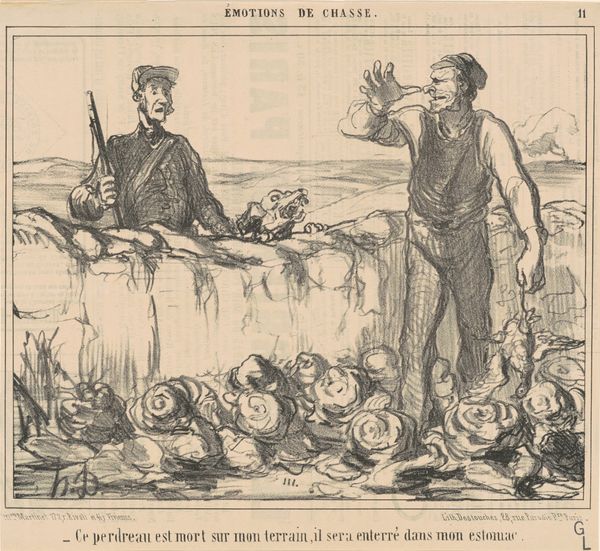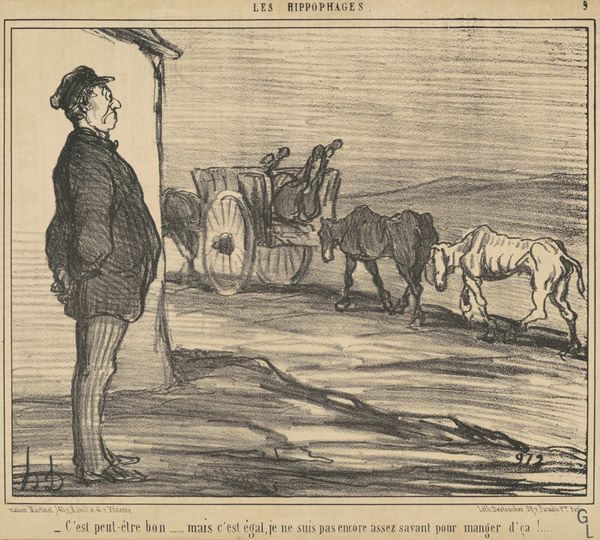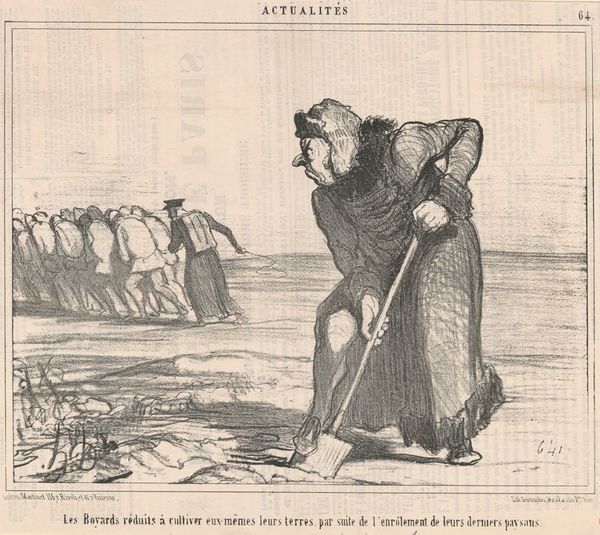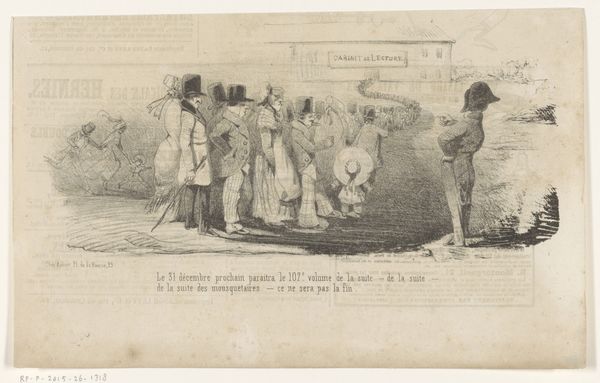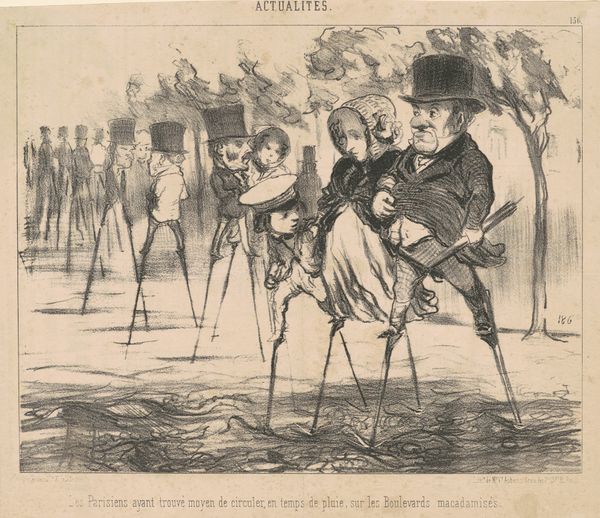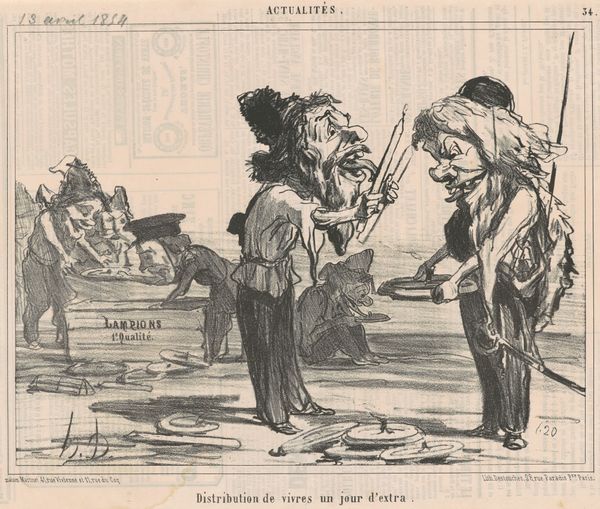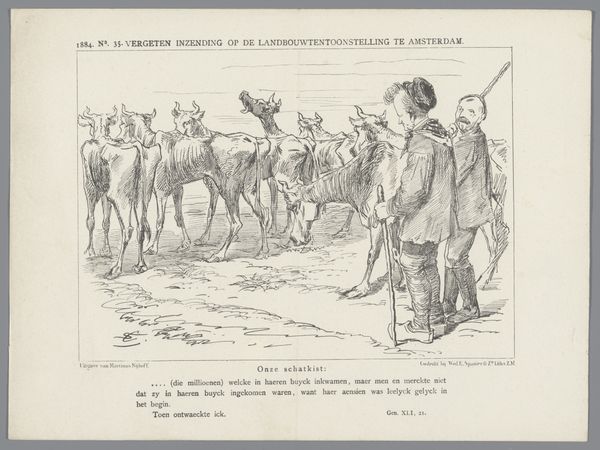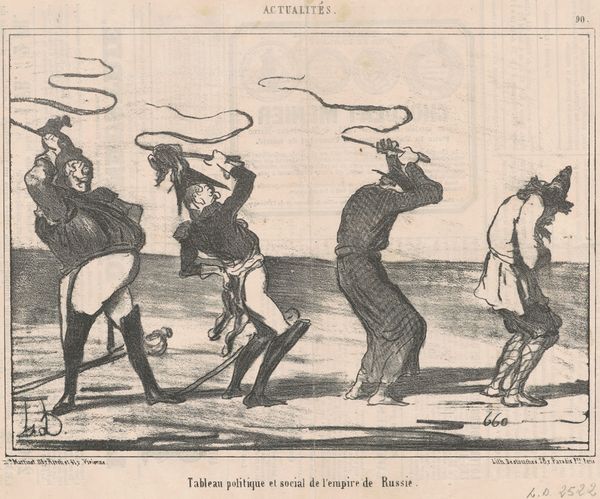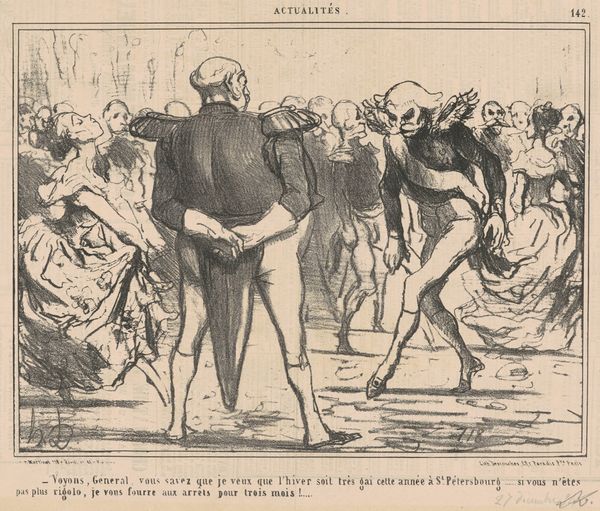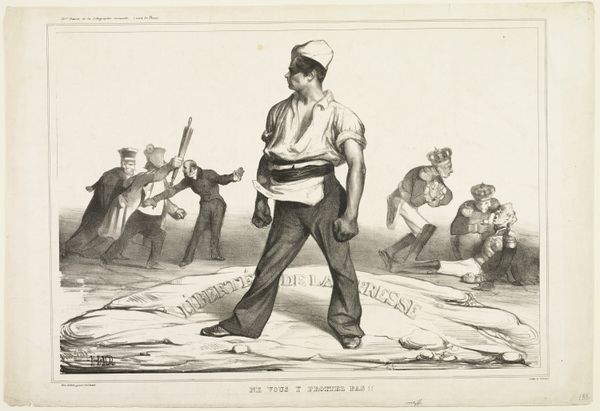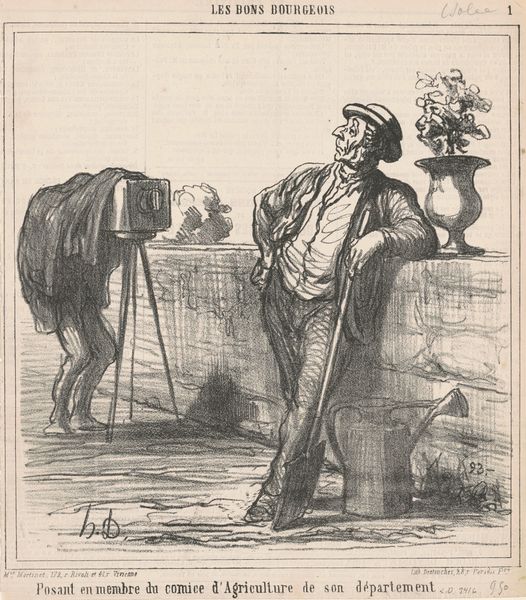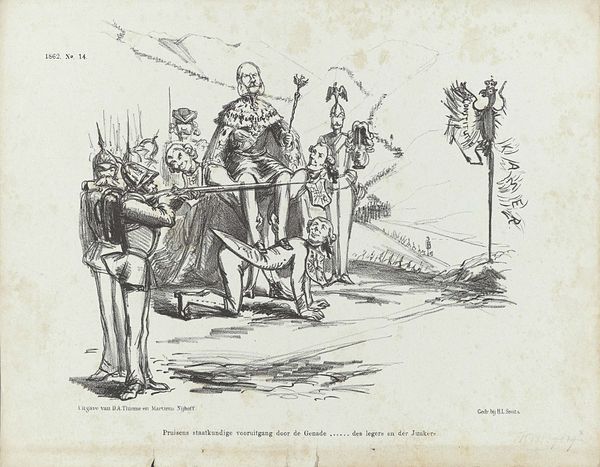
drawing, lithograph, print
#
drawing
#
lithograph
# print
#
landscape
#
romanticism
#
genre-painting
#
realism
Copyright: National Gallery of Art: CC0 1.0
Editor: Here we have Honoré Daumier's "Vue prise a Argenteuil," a lithograph from around 1856, a scene from the autumn. The drawing's loose and expressive, it almost seems to vibrate with energy, yet there's a sense of labor, figures bent over. What do you see in this print? Curator: It’s interesting you picked up on the "vibrating energy" and sense of labor. For me, this piece speaks volumes about the social realities of 19th-century France, a period of rapid industrialization and urbanization, don't you think? This work depicts laborers, but doesn't romanticize their work like some earlier pastoral scenes might have. It’s part of a larger genre-painting movement, showing "real life" instead. Editor: It’s not idealizing rural life? It definitely felt a bit…grittier than some pastoral works I've seen. Curator: Exactly. Think about Daumier's context. He was a caricaturist known for his social and political commentary. Knowing that, how does that affect your reading of these laborers, bent over, seemingly anonymous in their toil? The almost grotesque figure overseeing, maybe even profiting, reinforces that interpretation. Editor: That really shifts things. So instead of just a scene, it's a commentary on the relationship between labor and capital? Curator: Precisely. Daumier gives visibility to those often unseen, the working class. And what about their stooped postures? They tell a story of physical exhaustion and perhaps social disenfranchisement. Daumier isn't just showing us a landscape, he's showing us a society. Editor: I hadn’t thought of it that way initially, but it makes perfect sense. It’s much more charged than I realized! Curator: Exactly, understanding the socio-political landscape allows for richer meaning-making!
Comments
No comments
Be the first to comment and join the conversation on the ultimate creative platform.
